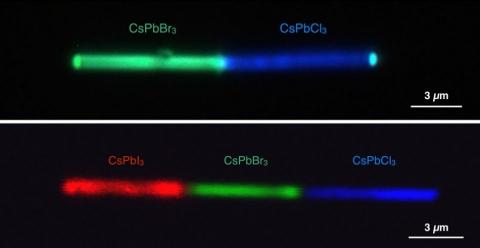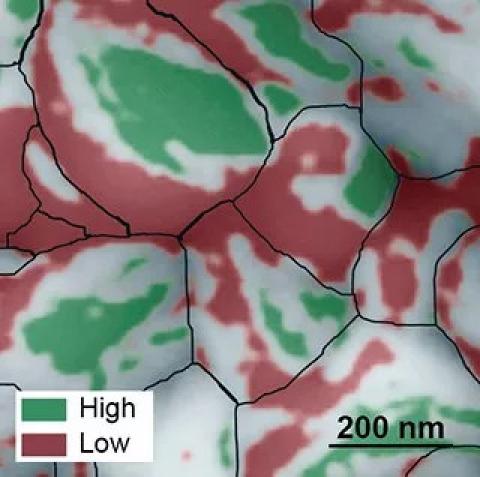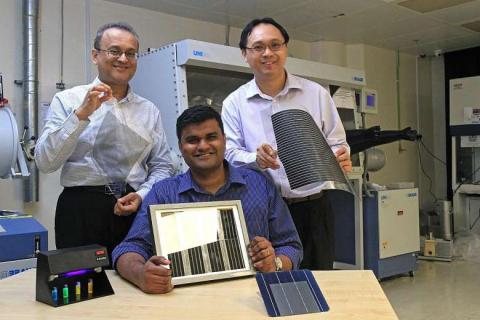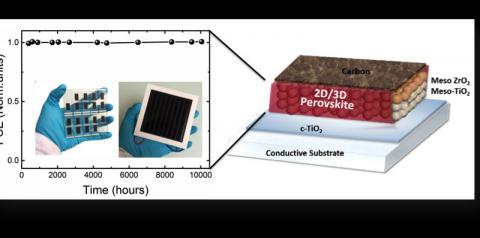Perovskites enable discharging multiple, bright colors from one nanowire
Researchers at the Department of Energy's Lawrence Berkeley National Laboratory (Berkeley Lab) have demonstrated that halide perovskites are capable of discharging multiple, bright colors from just one nanowire at resolutions as small as 500 nm. This work could impact the development of new applications in optoelectronics, nanoscopic lasers, photovoltaics and more.

The team used electron beam lithography to fabricate halide perovskite nanowire heterojunctions, the junction of two types of semiconductors. The researchers analyzed cesium lead halide perovskite, and then used a common nanofabrication method integrated with anion exchange chemistry to switch out the halide ions to form cesium lead bromide, cesium lead iodide and cesium lead chloride perovskites. Each difference resulted in a different color discharged.



